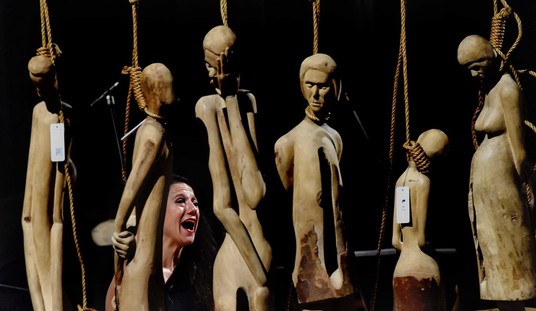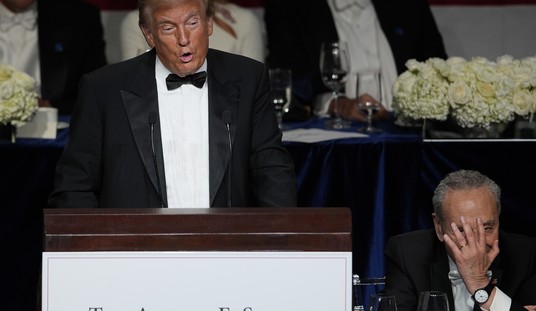You know all about the Kinsa “health weather” map by now, but the map doesn’t reflect every bit of data the company has. The Times revealed a bit of non-public info in a new story last night about the encouraging downward trend in fevers that Kinsa’s been observing as Americans keep their distance from each other. The question is this: What real-world events, if any, have had the most profound impact on driving those fever rates down? Most major cities have taken a variety of official measures, some symbolic, others mandatory. You know the drill — informally asking people to stay home, declaring a state of emergency, closing schools, closing non-essential businesses, ordering residents to shelter in place, etc. Are any of those more effective than the others?
Yep, said Kinsa to the Times. The general public can’t see it on the map but they can match the start of local downward trends in fevers to discrete interventions by local government to contain the disease and see which measures work better or worse.
Result: The exhortations to practice social distancing don’t do much. The forcible shutdowns do.
For some hard-hit cities, Kinsa also sent The New York Times fever data plotted on a timeline of restrictions enacted by mayors or governors.
Those graphs, Dr. Schaffner noted, showed that simply declaring a state of emergency or limiting the size of public gatherings did not affect the number of people reporting fevers.
But closing restaurants and bars and asking people to stay in their homes produced dramatic results in all three cities.
For example, in Manhattan, reports of fevers steadily rose during early March, despite a declaration of emergency on March 7 and an order on March 12 that public gatherings be restricted to less than 500 people.
The turning point began on March 16, the day schools were closed. Bars and restaurants were closed the next day, and a stay-at-home order took effect on March 20. By March 23, new fevers in Manhattan were below their March 1 levels.
Bill de Blasio dawdled for weeks about whether to close NYC’s schools until finally relenting under heavy pressure, including from his own staff. If he had shut schools two weeks earlier instead of urging New Yorkers to “get out on the town,” the city might be approaching a smaller peak of COVID-19 cases at this very moment. Instead they’re still a week or two away with a much bigger mountain to climb. The shutdown effect in Miami was dramatic too, according to Kinsa’s founder. He told the Times that fever rates there continued to soar past the declaration of emergency on March 12 and even the closure of schools on March 16. Not until bars and restaurants were finally shuttered on March 18 did they begin to diminish.
There’s circumstantial evidence elsewhere that moving more quickly to shut schools and businesses, even by a few days, will meaningfully slow the spread of the disease. Enlarge the image below to see what a week’s delay has meant to Tennessee vis-a-vis its neighbor Kentucky:
As of March 27th. Governor @AndyBeshearKY announces KY residents should avoid traveling across the border unless essential. University testing continues in both states: KY reporting + only; TN reporting + and –
High-res PDFs: https://t.co/dtxqKC2tXp #TogetherKy #TNStayApart pic.twitter.com/7y7xNdyOFP
— Stephanie Jolly (@StephanieJolly) March 28, 2020
If you prefer a comparison involving New York, here’s a dramatic result involving the San Francisco Bay Area:
It's very hard to look at this and tell any other story besides the obvious one about the one key local governance decision.https://t.co/l7iCC8Icih pic.twitter.com/ID79BjmgPP
— Alan Cole (@AlanMCole) March 31, 2020
New York State didn’t order residents to shelter in place until four days later. It’s not quite as simple as that, of course: NYC has higher density, which encourages the disease’s spread, and New York State is testing more than California is, which may be masking hidden contagion in the Bay Area. But the general point stands. Earlier shutdowns do meaningfully retard infection, which is what you’d expect. It’s not just a matter of depriving people of places to gather, like schools and bars, it’s a signal sent to the population that the crisis has reached a magnitude of such urgency that shutting down the economy is the only way to prevent (or mitigate, in NYC’s case) catastrophe. If you want to send casual skeptics the message that it’s dangerous to be mingling and time to start practicing social distancing, that’s about as dramatic a way to do it as one can manage.
Seems like the message has been received:
Americans have rapidly adopted social distancing practices, @GallupNews poll finds. pic.twitter.com/x1vIYK2ksa
— Scott Clement (@sfcpoll) March 31, 2020
I’ll leave you with one more piece of Kinsa data. Check virtually any county on their map of the U.S. and you’ll find fevers trending lower, sometimes so low that they’re below historical norms for this time of year. (Social distancing reduces not only COVID-19 infections but flu infections, of course.) But not quite every county. Gulp:

That’s Brooklyn. All four of NYC’s other boroughs show the same trend: Although fevers in each remain in “typical” range for the moment, they’ve begun to trend slightly higher in the past few days despite the lockdowns and the fear of infection that’s keeping city residents at home. Why would fever rates be increasing in the one spot in the U.S. more than any other where people have the strongest incentive to keep their distance?







Join the conversation as a VIP Member